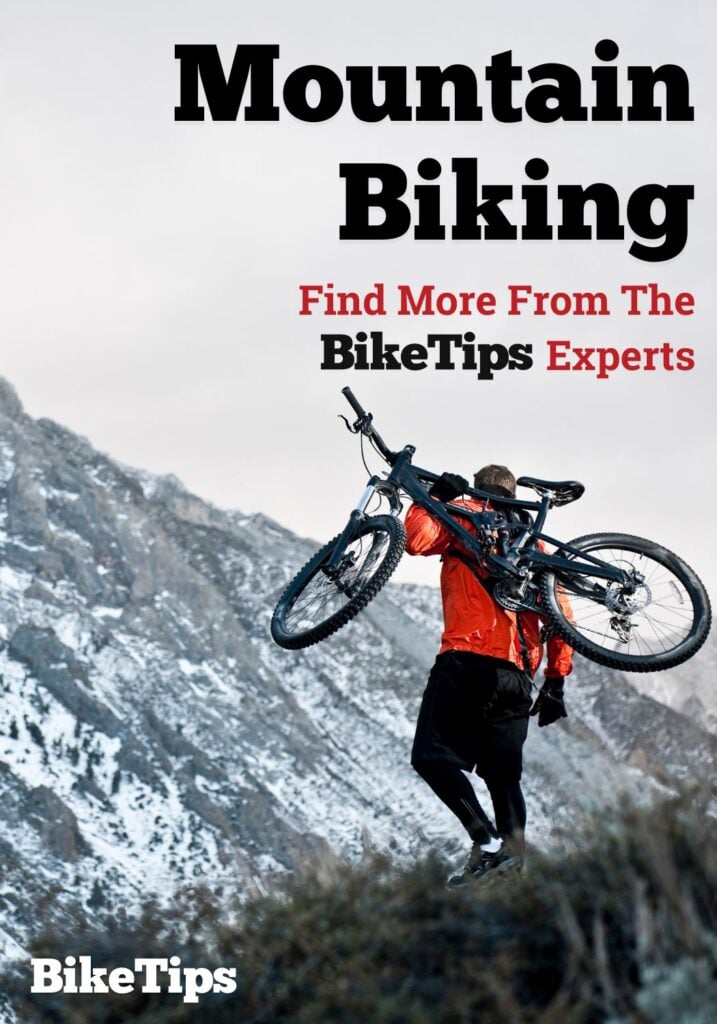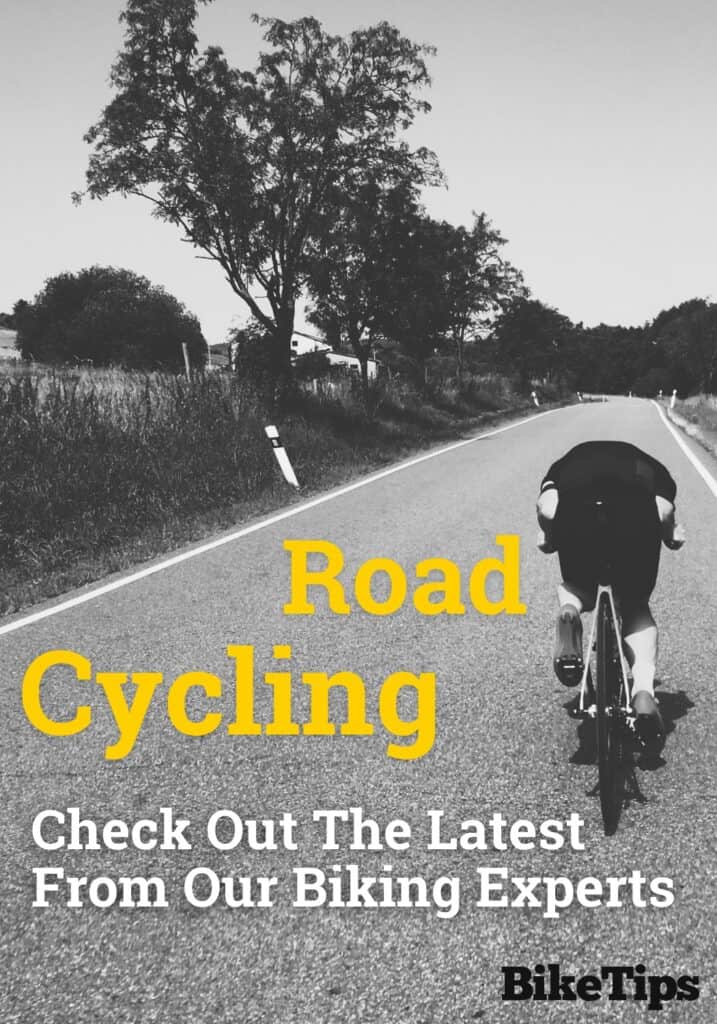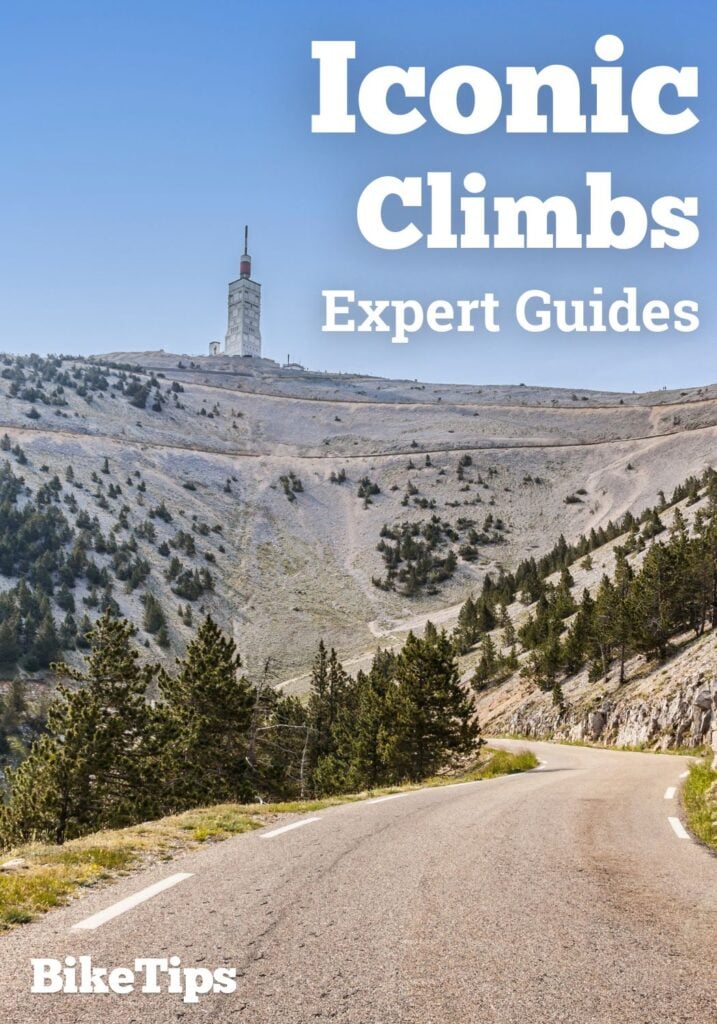So, you’re thinking about setting out on a bikepacking adventure?
You’ll be able to stray far from the beaten track and there’s a massive sense of achievement in completing a bike tour – and unlike most epic journeys, there’s a minimal environmental footprint.
To help you kickstart your adventure, we’ve assembled a comprehensive bikepacking gear list so you can separate the don’t-leave-without-it from the probably-won’t-end-up-using-that!
It might look like a lot of gear to put together, but a lot of it will already be owned by most cyclists – and there’s usually a budget option for the bits that aren’t!
In this guide, we’ll be covering:
- What’s The Best Type Of Bike For Bikepacking?
- How Do I Carry My Bike Touring Gear?
- The Bikepacking Repair Kit
- Bikepacking First Aid Kit Essentials
- Bike Touring Clothing
- Bikepacking Gear List: Toiletries
- Bike Touring Navigation Gear
- Optional: Bikepacking Camping Gear
Let’s get started!
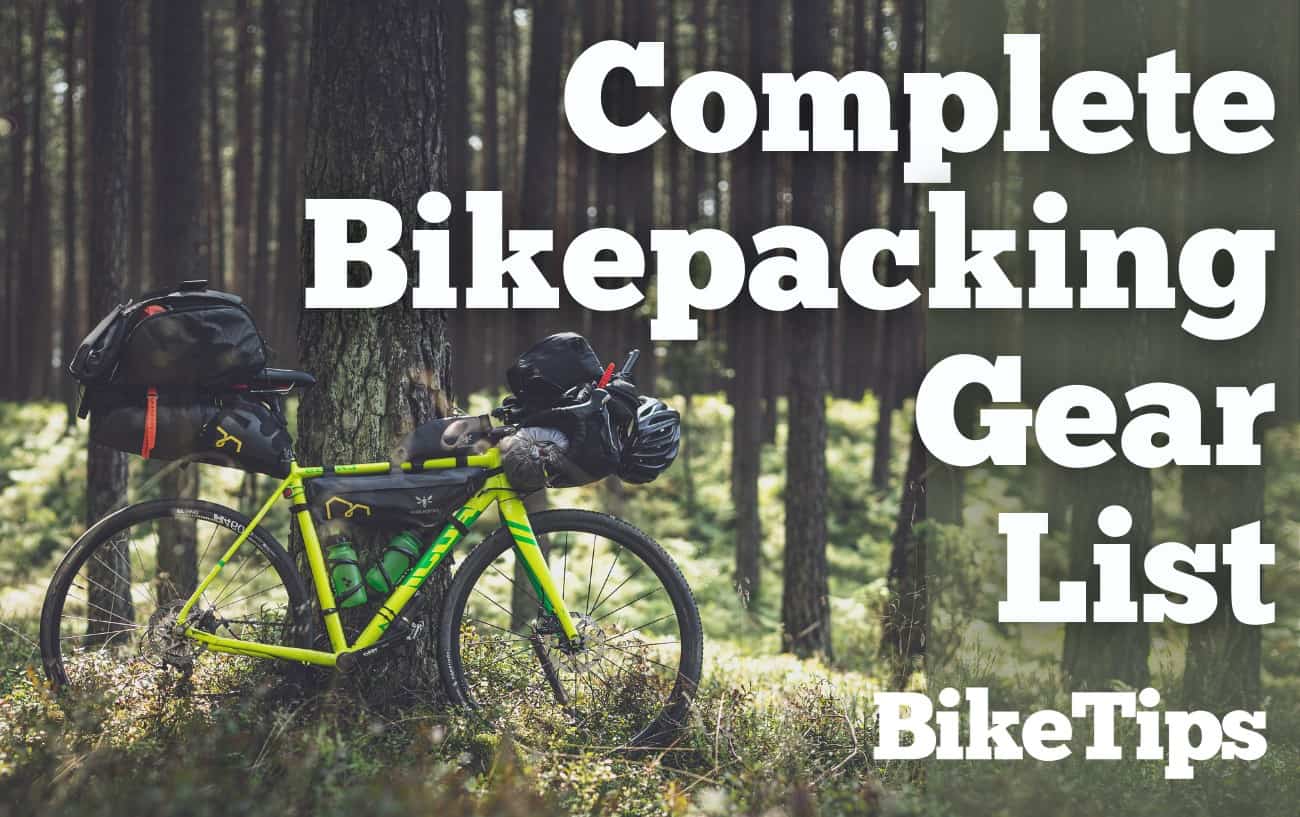
What’s the best type of bike for bikepacking?
If you’re starting with a small bikepacking trip, the best bike is probably the one you already own!
It can be easy to find reasons to procrastinate setting out on your bikepacking trip, and feeling like you’ve got to invest hundreds of dollars in a shiny new bike is probably one of the chief offenders.
If you’re only planning a relatively short, easy trip close to home, and you’ve got a bike that is in decent working order – just get going!
If you’re doing a more ambitious bike tour, however, it’s probably worth investing in a decent bike.
The best type of bike for you depends on the type of bike tour you’re planning. For off-road bikepackers, a mountain bike is usually the best option.
Bikepacking Gear: Mountain Bikes
When deciding on the right mountain bike for your trip, think about your route and what bike characteristics would be useful.
Bikepacking Gear: Touring Bikes
For bicycle tours that stick mostly to paved roads, we’d recommend a touring bike as your best option.
Touring bikes are – unsurprisingly – specifically designed with bike tours in mind. They’re not dissimilar to road bikes (and it’s possible to do a bike tour on a road bike), but there are a few key departures that make touring bikes better adapted for the role.
Touring bikes prioritize durability and comfort, unlike the speed-and-weight-at-all-costs approach of road bikes. They usually feature steel frames, which offer greater strength and stability than the lighter aluminum or carbon typically used for road bike frames.
They normally use wider, fatter tires, lower gearing options, more upright seating positions, and – crucially – attachment points for panniers.
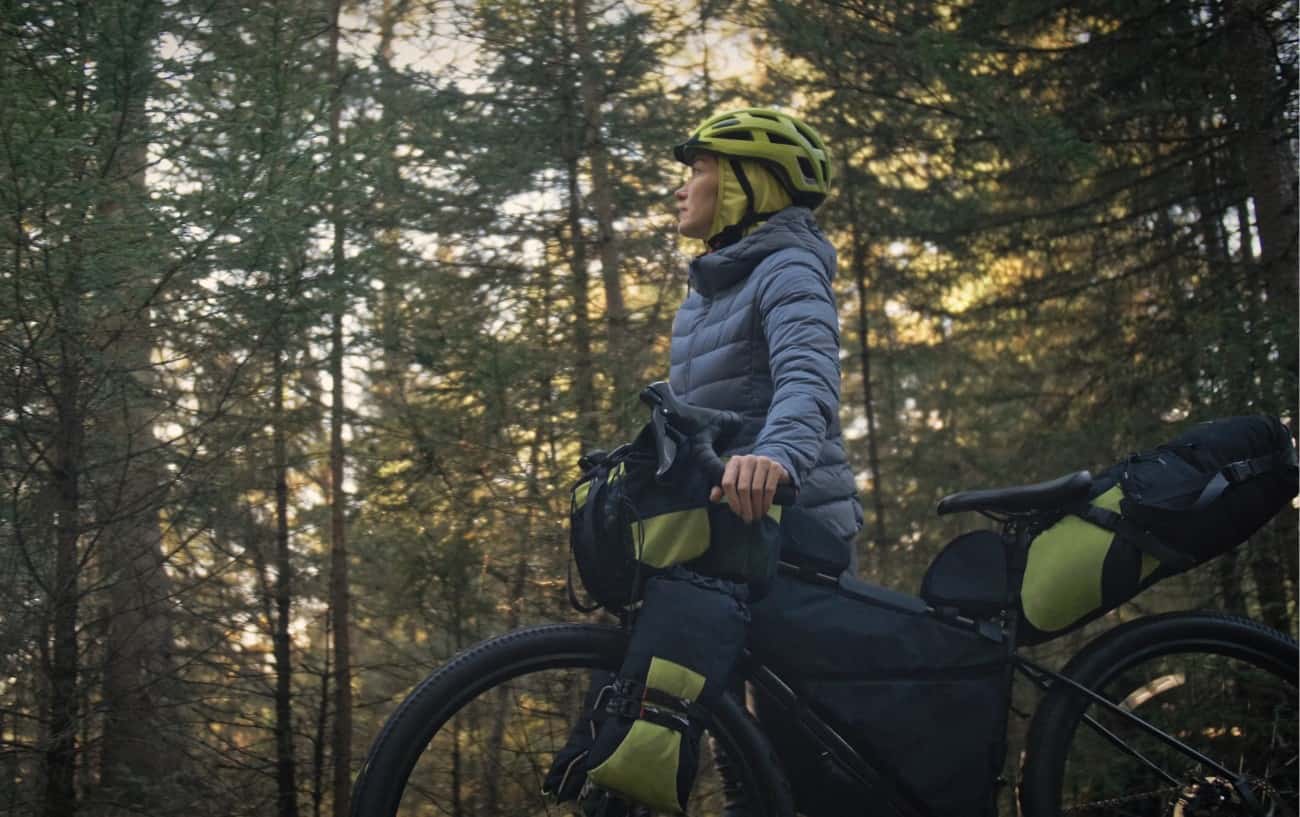
How Do I Carry My Bike Touring Gear?
Storage space is essential for every bikepacking gear list.
In an ideal world, you want to have enough on-bike storage that you can ride without a backpack – but this isn’t always possible with every bikepacking setup, especially if you need to carry camping gear too.
You can find cycling bags that attach to just about every part of your bike, and the prices can vary widely.
In general, paying more will get you lightweight gear and better waterproofing (our recommendations mostly sit around the upper-middle price range) – but there are still plenty of worthwhile options that won’t break the bank if you shop around!
Here’s our rundown of 4 essential types of bikepacking storage space.
#1. Panniers
The tried-and-tested cycling storage solution, panniers are bags that attach to racks at the front or rear of your bike.
Panniers give you the most capacity of any of these storage options, but their weight and bulk mean they’re not ideal if you’re trying to kit out a nimble off-roader for technical trails.
#2. Seat Pack
Seat packs attach to your seat post, protruding backward from behind your saddle. They usually won’t fit alongside a rack and pannier setup, but they’re lighter and nimbler.
#3. Frame Pack
Frame packs allow you to use the bike’s triangle for storage.
Because they often need to be custom-made for each bike, frame packs can get very expensive – although there are still some worthwhile universal options available.
#4. Handlebar Pack
Handlebar packs are a great place to store long, awkward, bulky items – especially tents. Handlebar packs should be kept as light as possible, or handling will be affected.

The Bikepacking Repair Kit
Building a bikepacking repair kit is a trade-off between weight, space, and necessity.
These are our 7 essentials that should be in your repair kit for every bike tour.
- Portable Bike Pump
- Spare Inner Tubes
- Inner Tube Patch Kit
- Tire Levers
- Pliers
- Cyclist’s Multi-Tool with Chain Tool
- Heavy-Duty Adhesive Tape
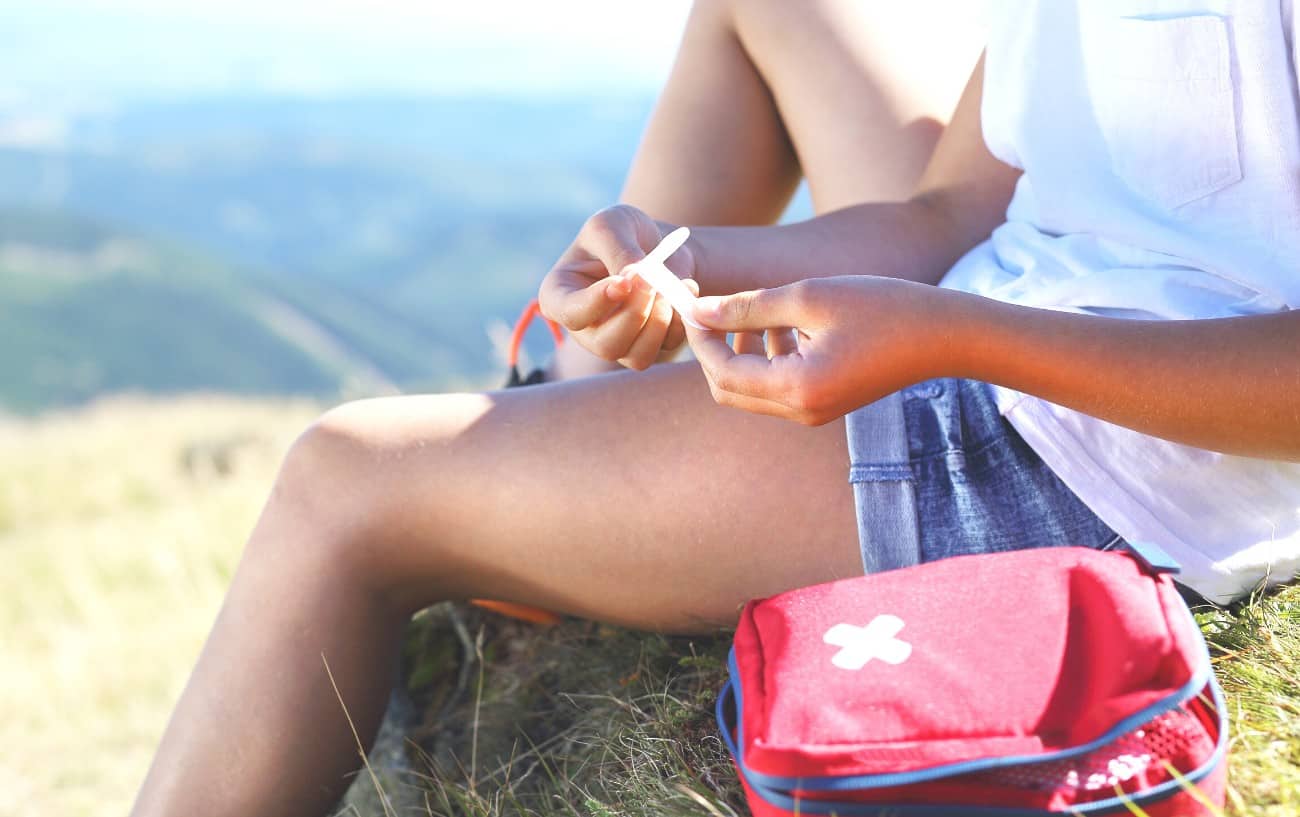
Bikepacking First Aid Kit Essentials
You’ll usually find it’s cheaper (and less hassle) to buy a pre-packaged first aid kit instead of building your own – but not all first aid kits were created equal!
Here are 8 absolute essentials to make sure your kit includes (and to add if it doesn’t):
- Tweezers
- Band-Aids
- Painkillers
- Gauze Bandage
- Sterile Non-Adhesive Pads
- Fabric Adhesive Tape
- Irrigation Syringe (20 cc)
- Safety Pins
If you’re going into the wilderness or a country where you can’t be sure of clean water, it’s also a good idea to bring water purification tablets or filters.
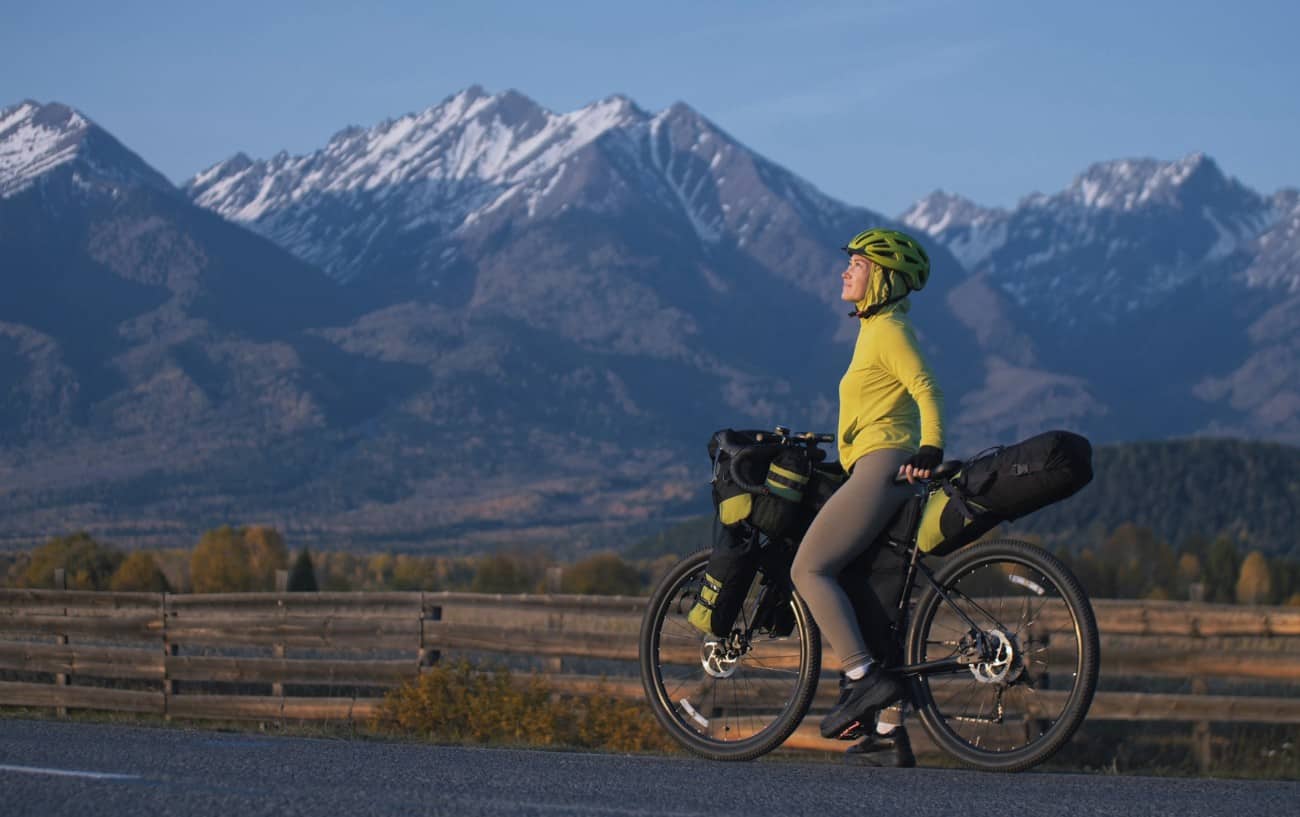
Bike Touring Clothing
The clothing you need to take will depend on the climate you’re bikepacking in, but there are a few essentials that should be brought on every trip:
- Cycling Shorts to avoid chafing
- Waterproof Layers
- Insulation Layers for the evenings, even if you’re traveling in a hot climate
Bikepacking Gear List: Toiletries
- Chamois Cream – paired with cycling shorts this is your best defense against chafing.
- Sunscreen
- Hand Sanitizer
- Toothbrush and Toothpaste
- Toilet Paper – rip out the cardboard tube to save space.
- Period Products if you need them.
- Bin Bags
- Deodorant – avoid antiperspirants as you need to be able to sweat!
Bike Touring Navigation Gear
- Mobile Phone – vital both for navigation and in case of emergencies.
- Portable Charger – invest in a solar-powered charger for peace of mind.
- Navigation Apps – especially important if you’re bikepacking away from roads. We’d recommend GAIA GPS, which is an old favorite with mountain bikers!
- Backup Options – if you’re heading deep into the wilderness, play it safe and bring a paper map, compass, and locator beacon in case disaster strikes with your phone. Sometimes the old ways are the most dependable!
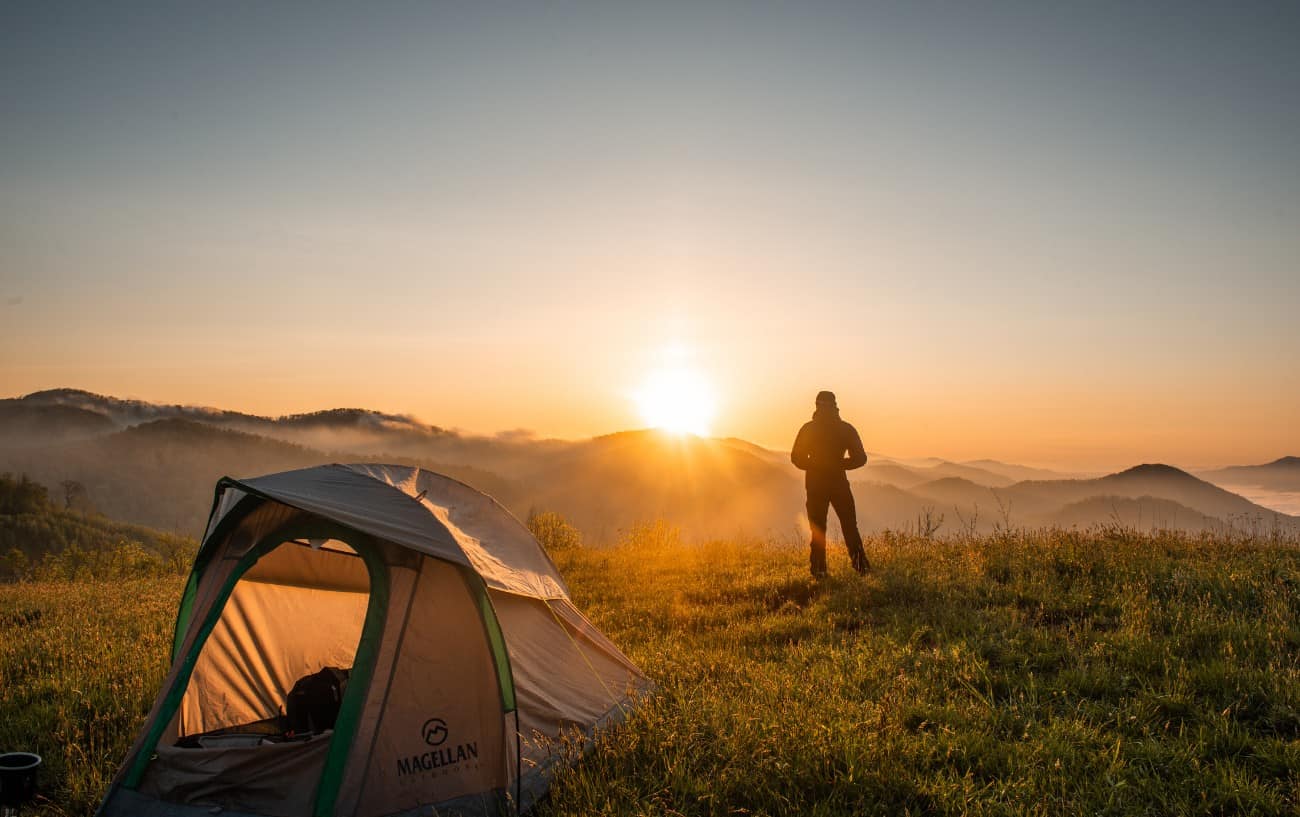
Optional: Bikepacking Camping Gear
If you’re planning on camping during your bikepacking adventure, you’ll need to invest in some decent equipment.
Camping gear is an area where you really do get what you pay for. Better-quality equipment will be lighter, warmer, more waterproof, and more durable. You’ll regret saving a few dollars when you spend your nights shivering in a leaky tent!
Here are the four essentials to pack for camping on a bike tour:
#1. Tent
This one’s pretty self-explanatory!
#2. Sleeping Bag
The sleeping bag that’s best for your trip will depend on the climate you’re bikepacking in, but if in doubt we’d always advise you to err on the side of caution by opting for a warmer one!
#3. Camping Mat
Some bikepackers forgo a camping mat to save weight and space – but we’d advise against it.
Not only will a good night’s rest help you recover in time for the next day’s ride, but a camping mat also provides an added layer of insulation from the ground on cold nights.
#4. Camping Stove
If you’re bikepacking any longer than a day or two, hot meals – and therefore a camping stove – are essential.
There’s a lot to consider when choosing the right type of stove, including the availability of fuel in the area you’re traveling, international restrictions, safety, and environmental concerns.
Rather than recommend a specific stove, we’d advise checking out this guide from CleverHiker so you can make an informed choice about the best type of stove for your trip.
And always bring along a spork for a foolproof cutlery solution!
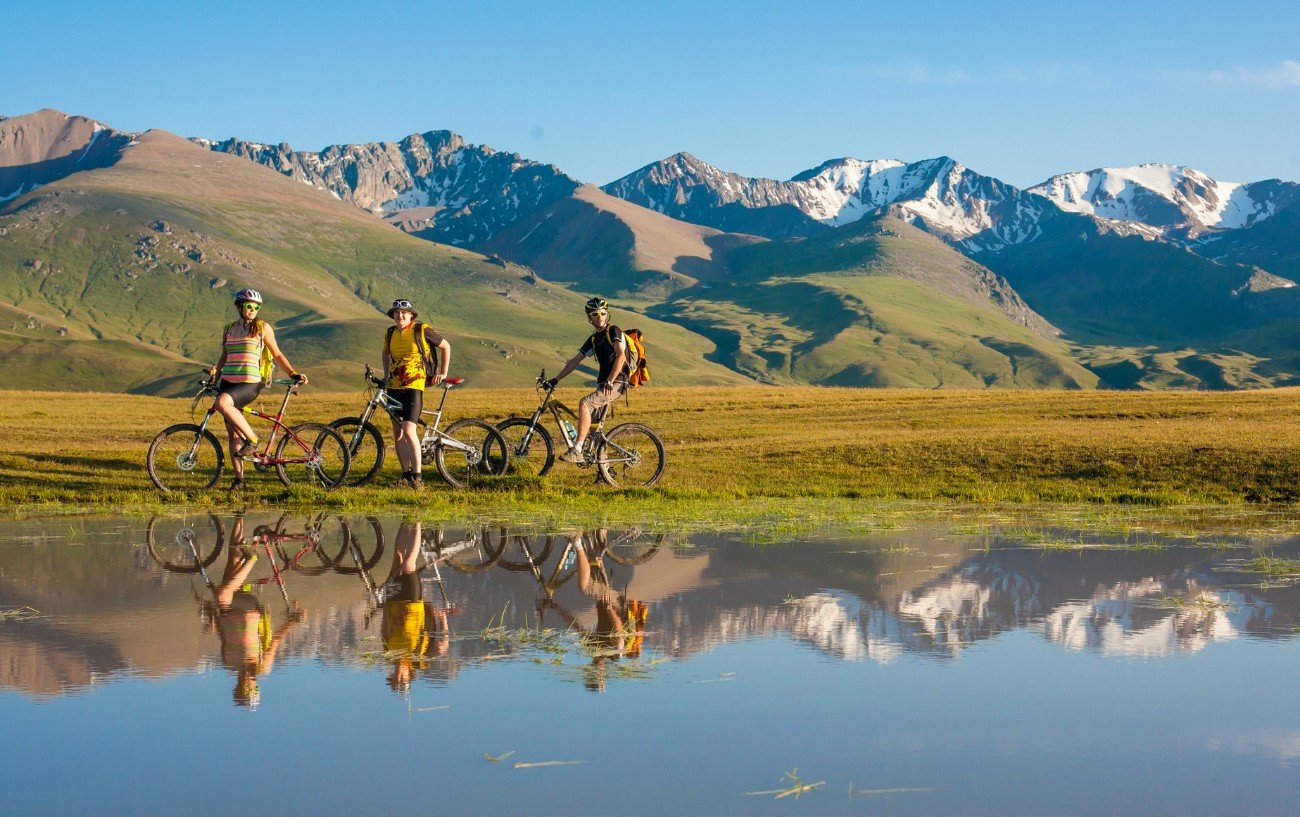
Hit The Road!
Now you know what to include on your bikepacking gear list, it’s time to hit the road (or trail) for yourself!
This might look like a dauntingly long list, but if you’re into outdoor activities you’ll probably already own the bulk of it.
And if not, there are decent budget options available for most of the items on this list. If you discover a passion for bikepacking you can always upgrade later – but for now, the most important thing is just to get up and go!
